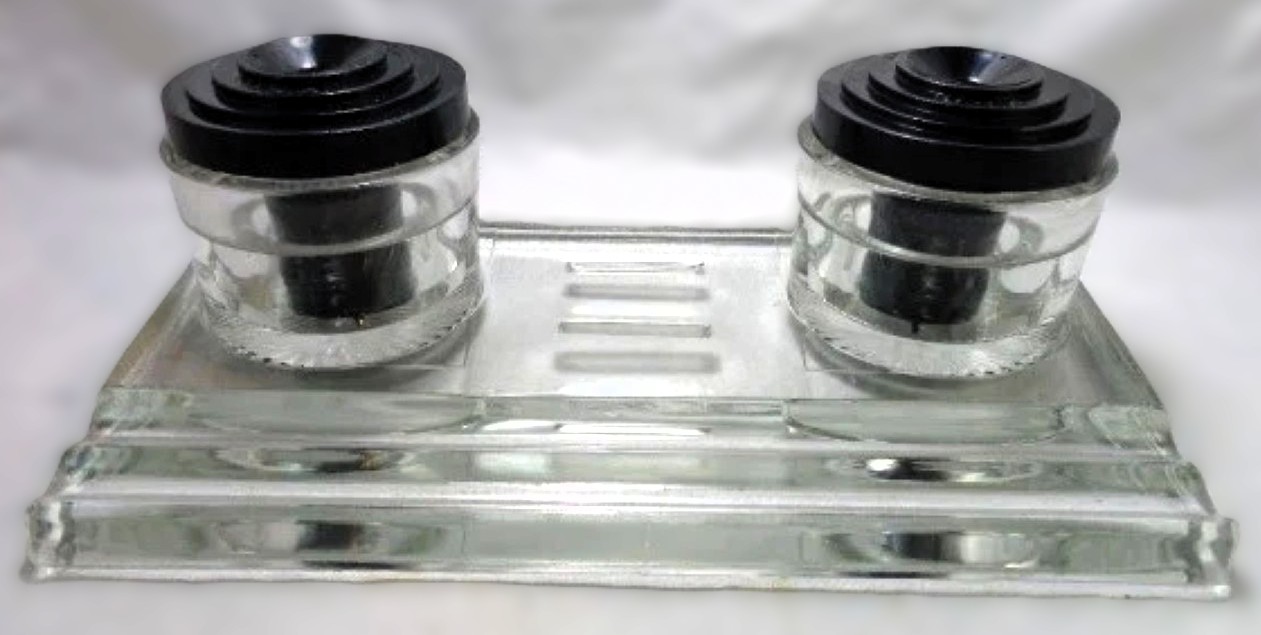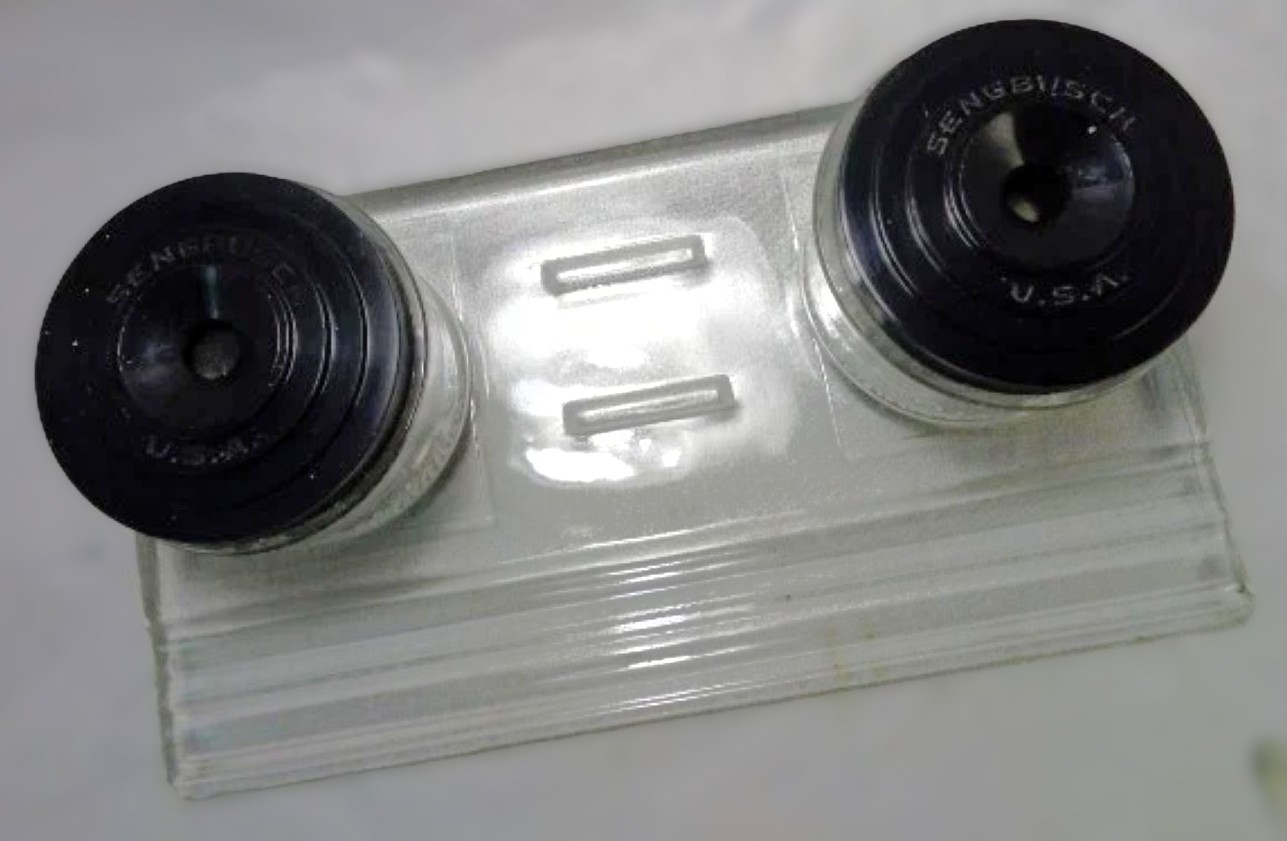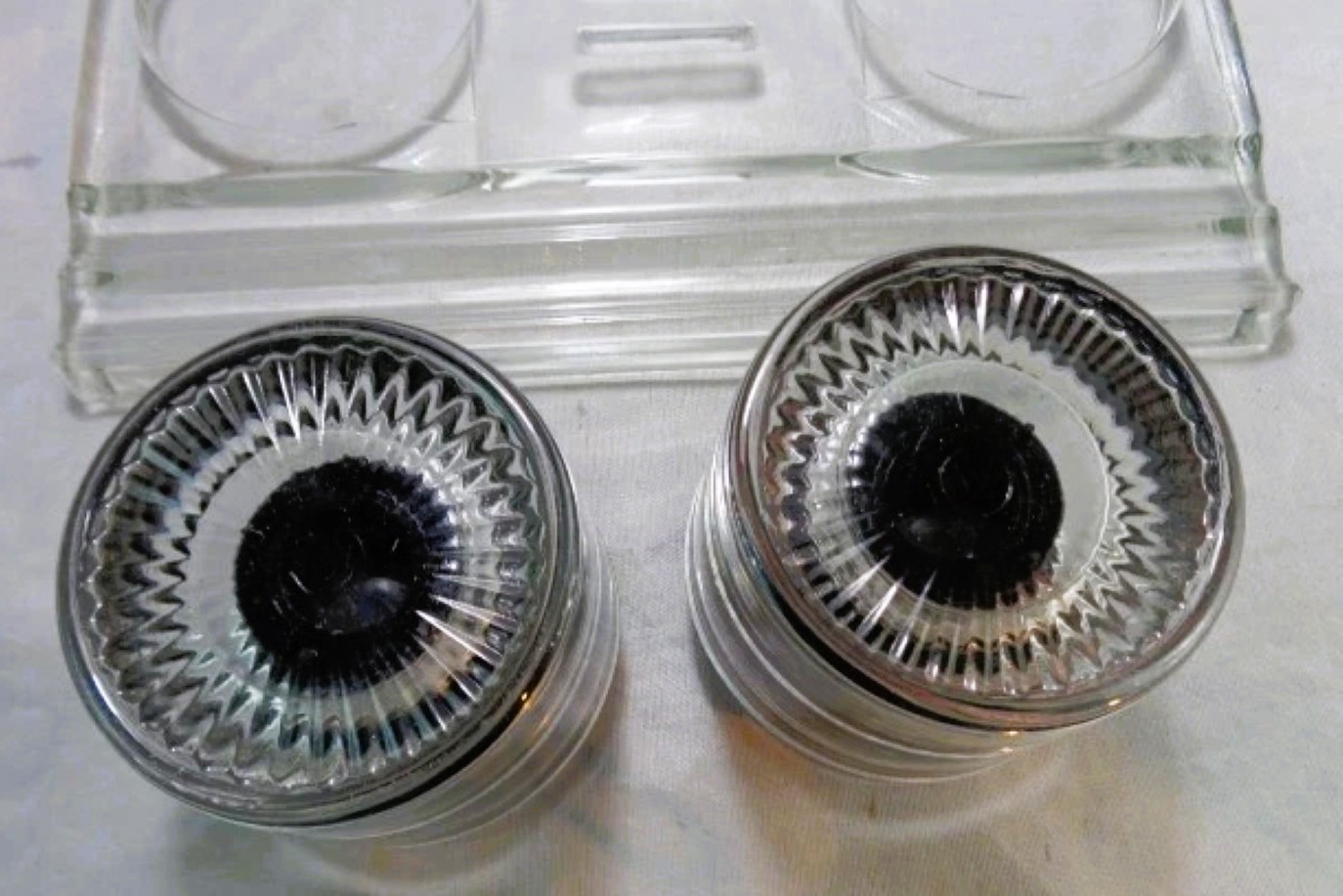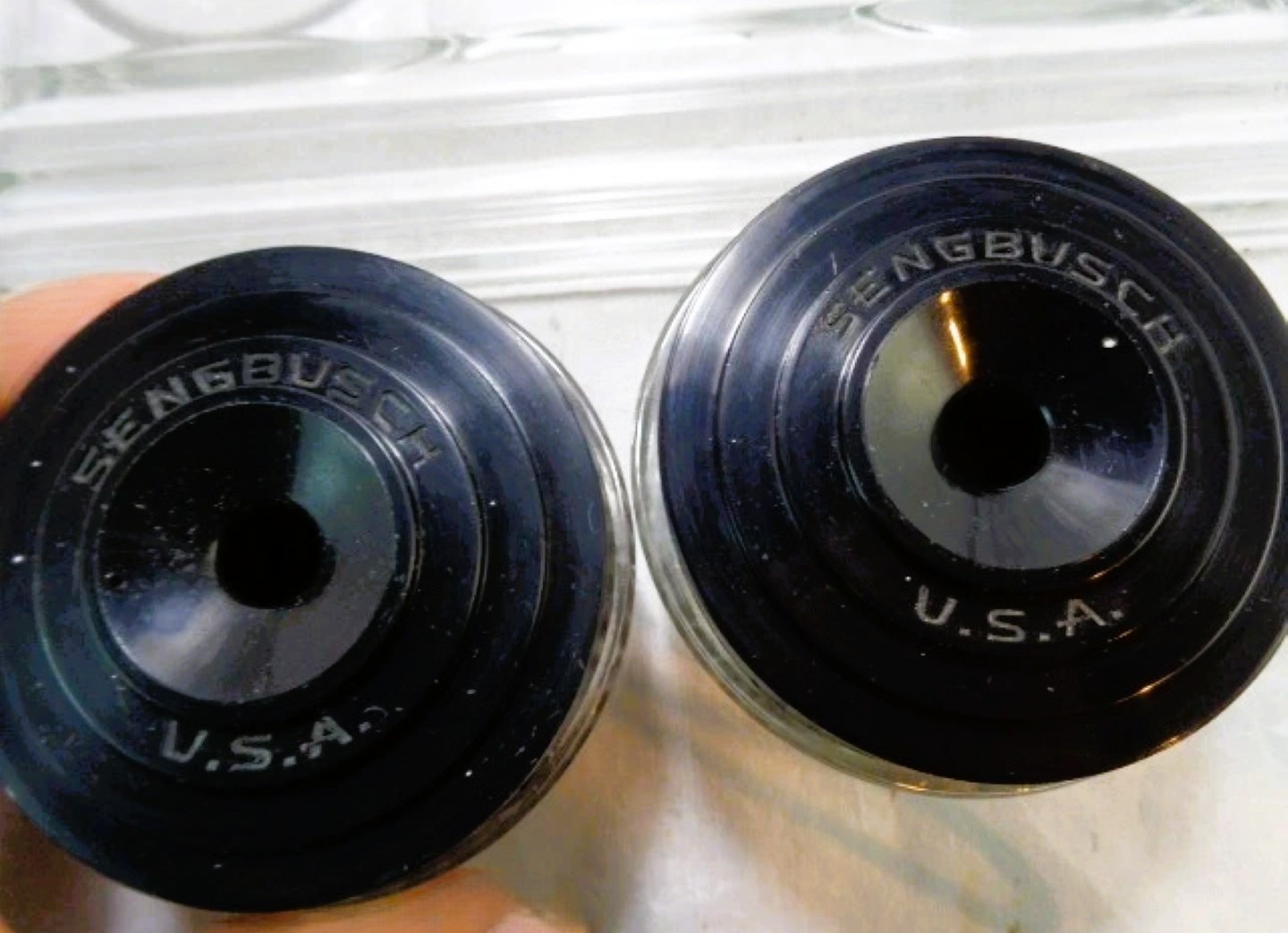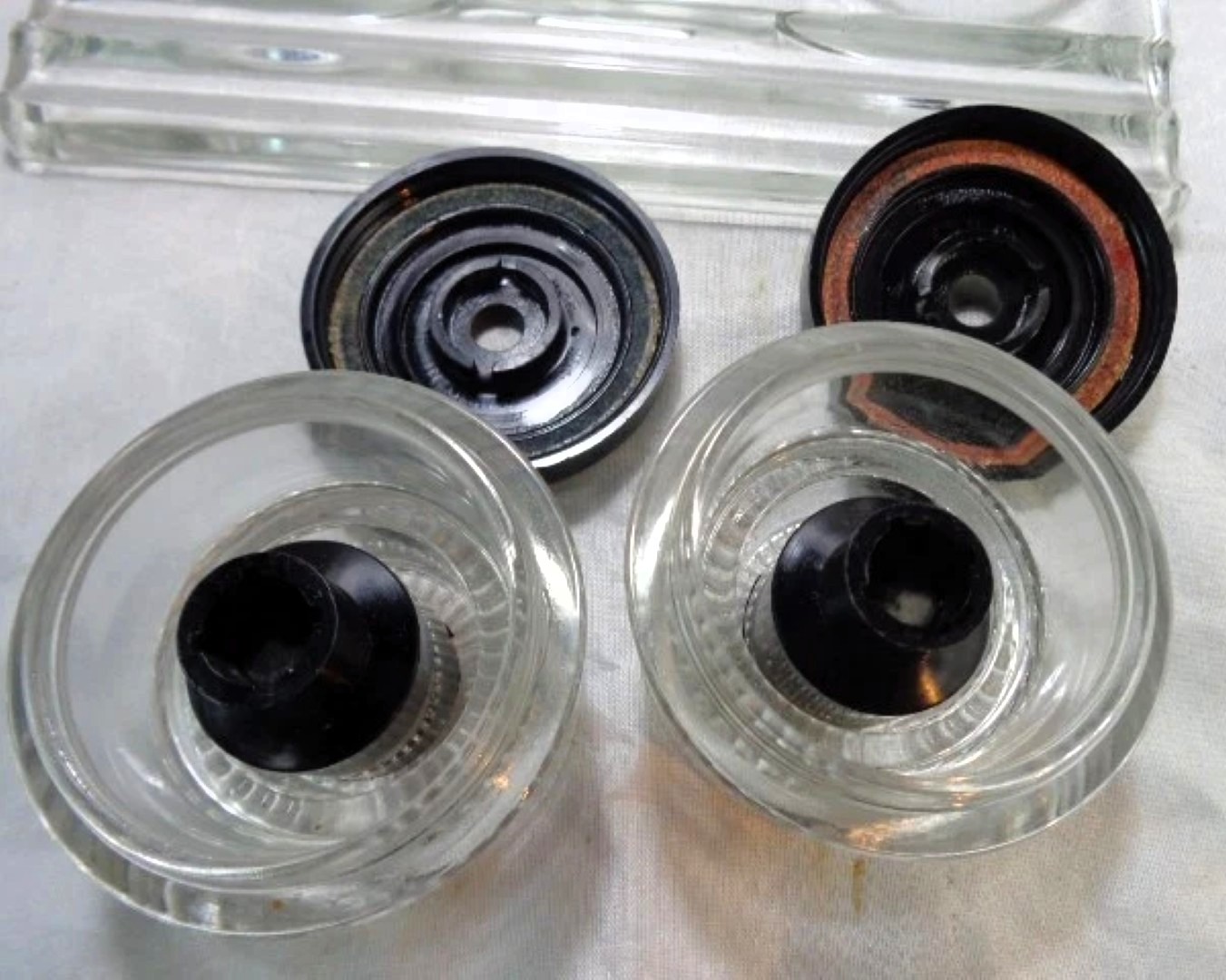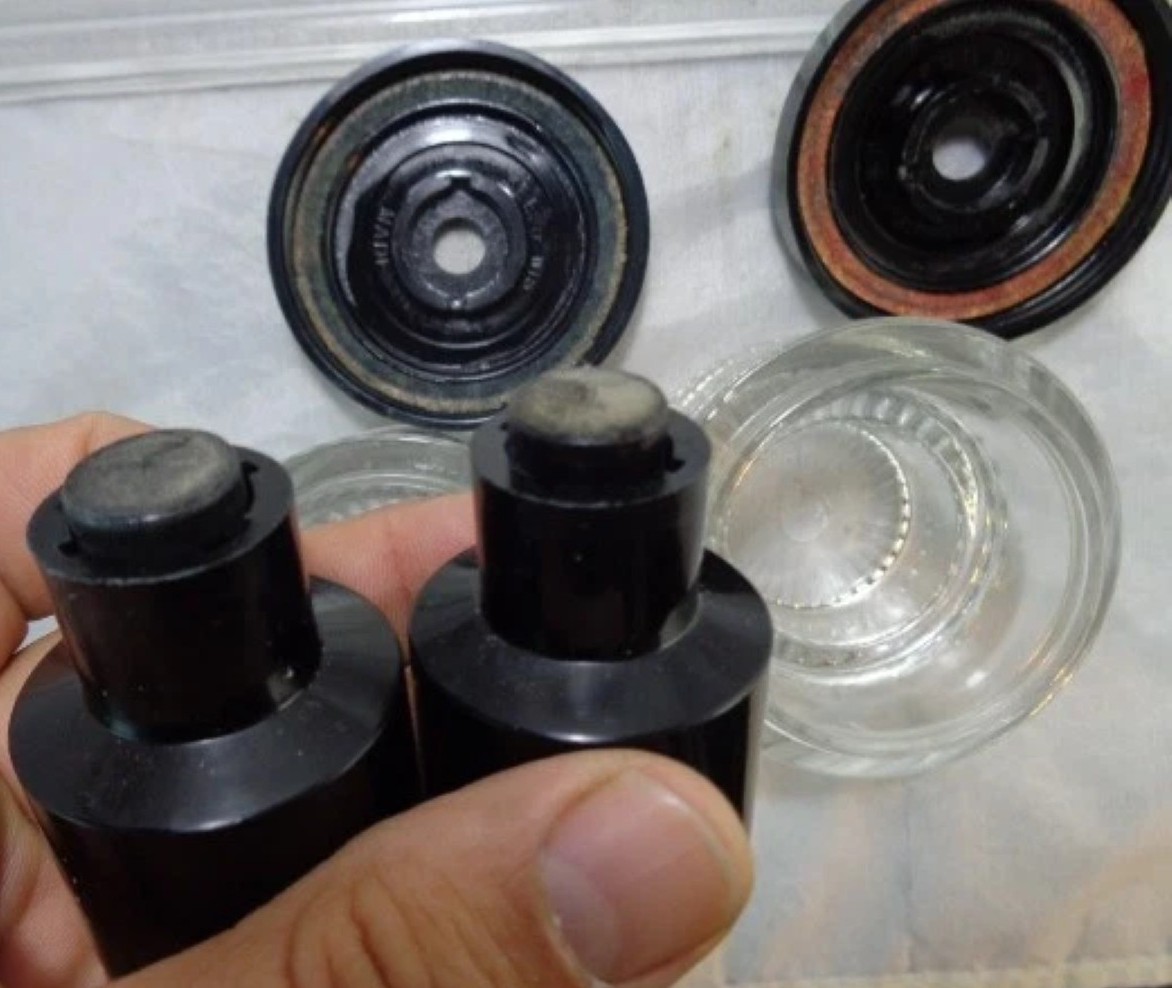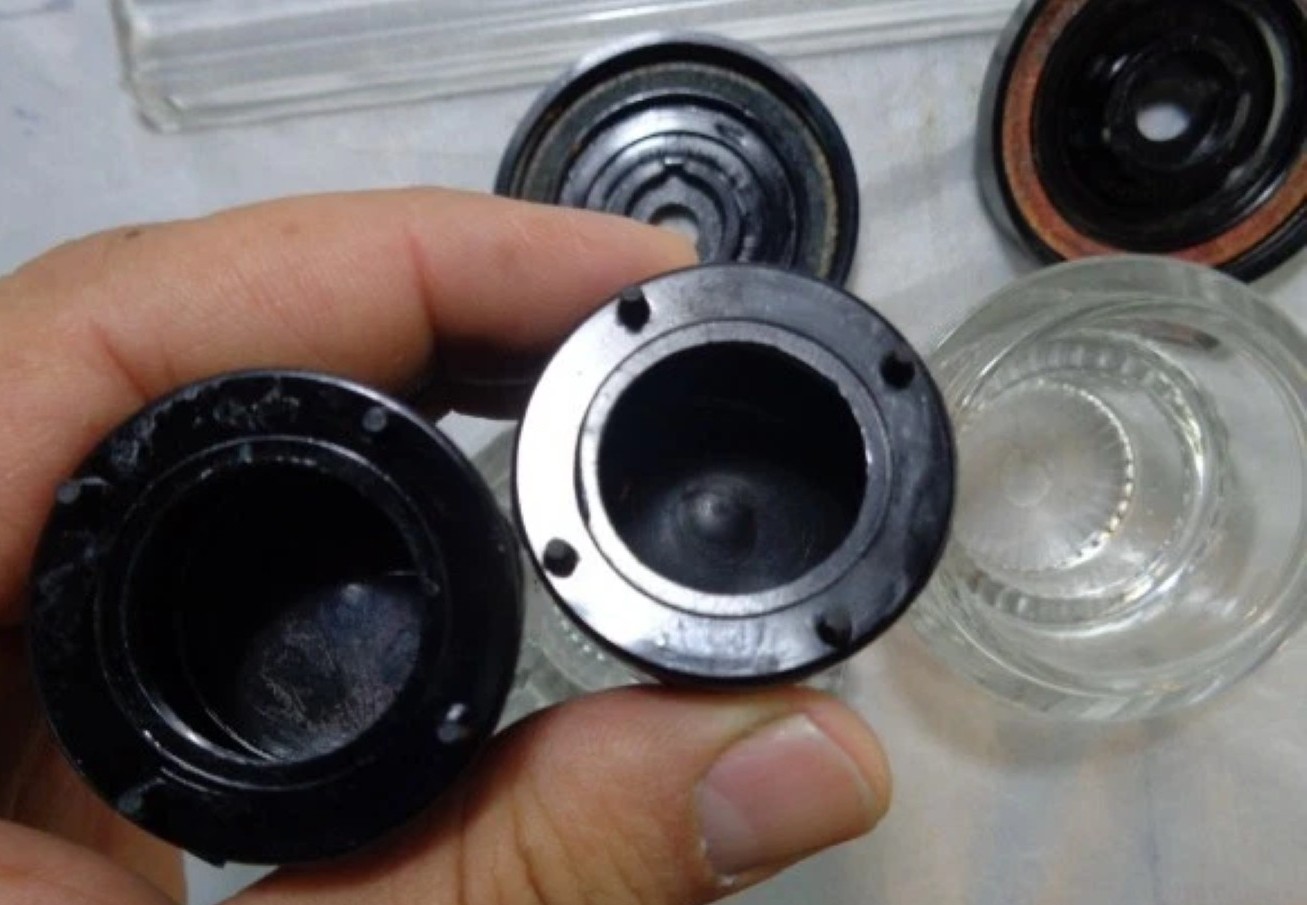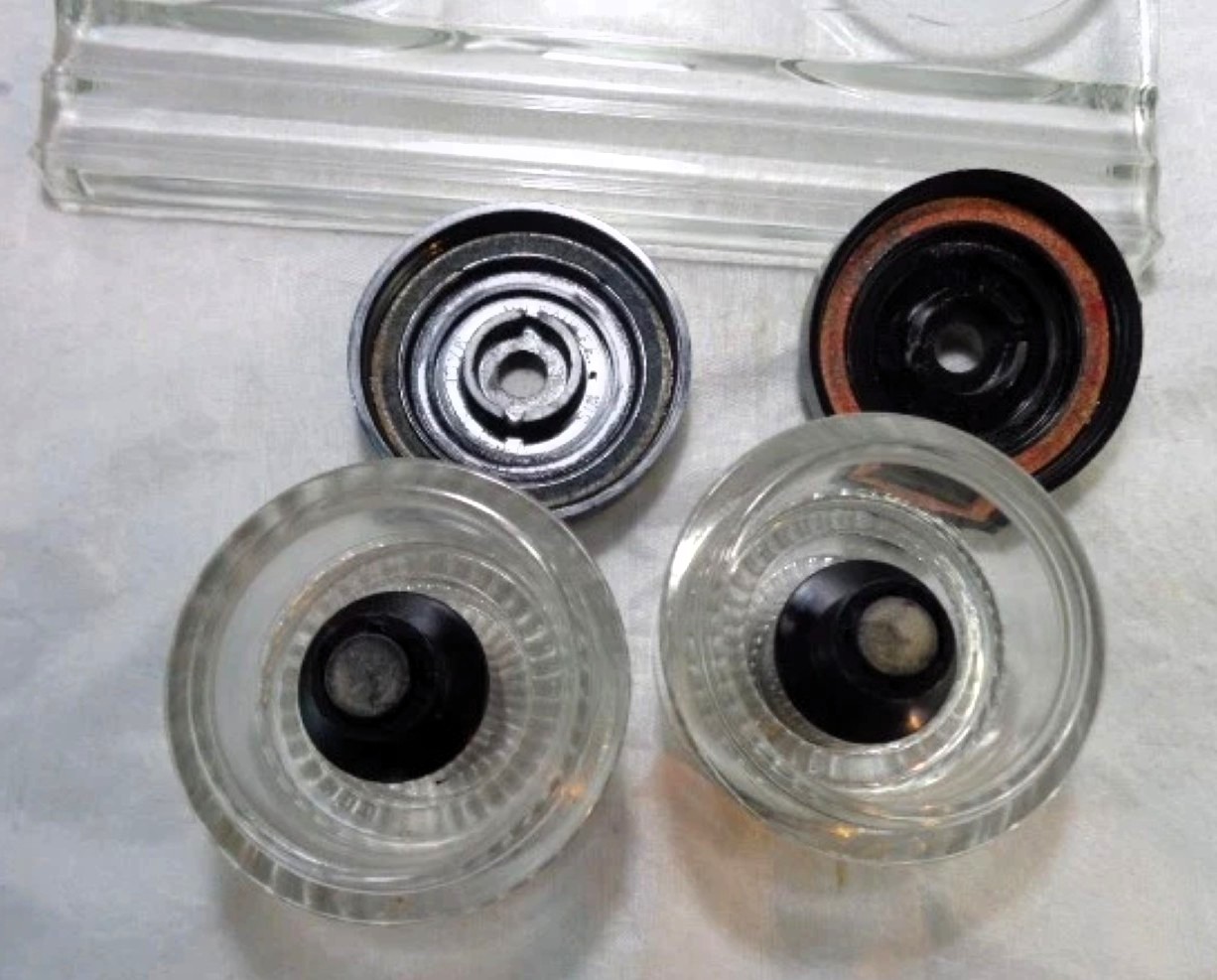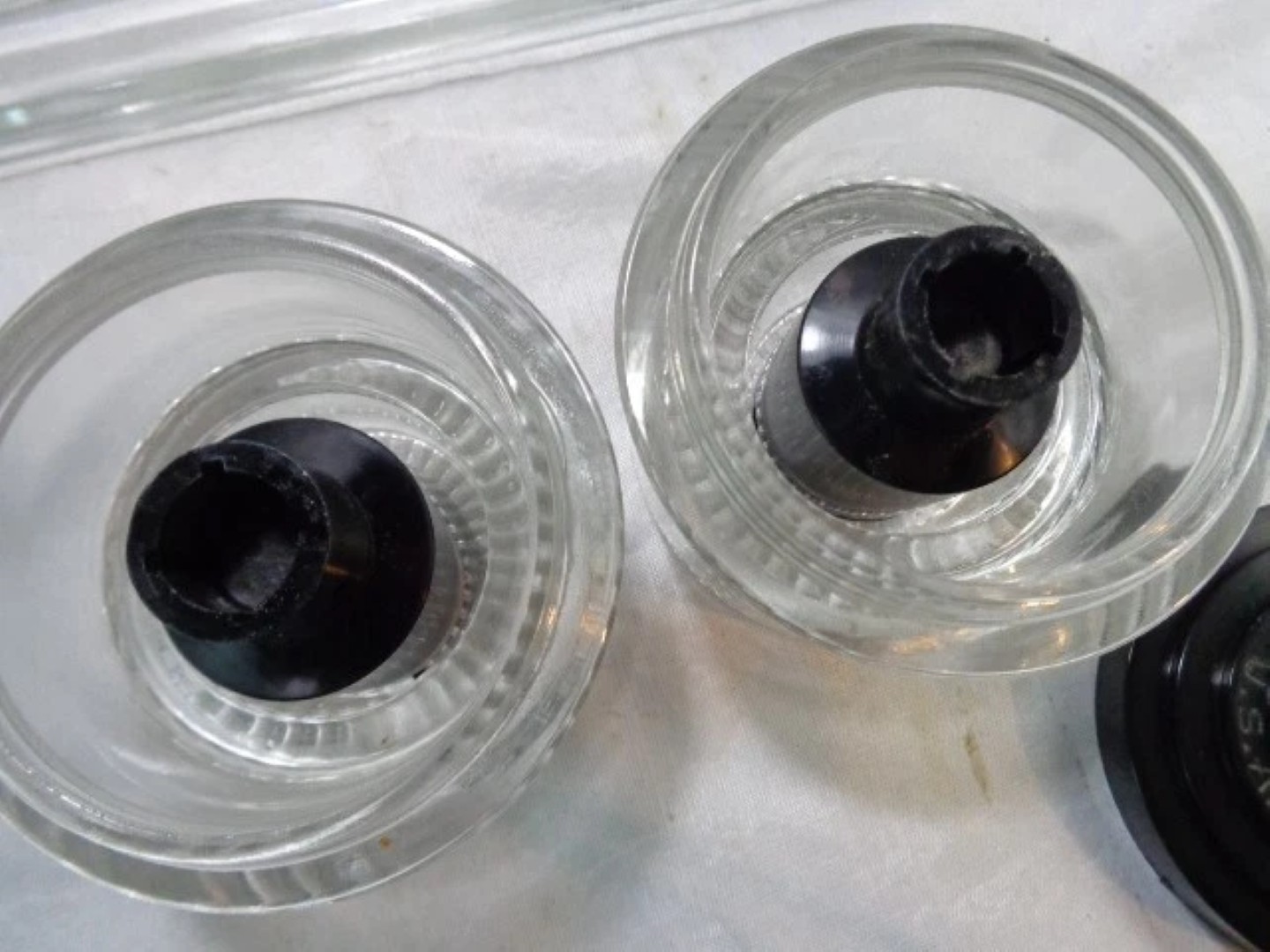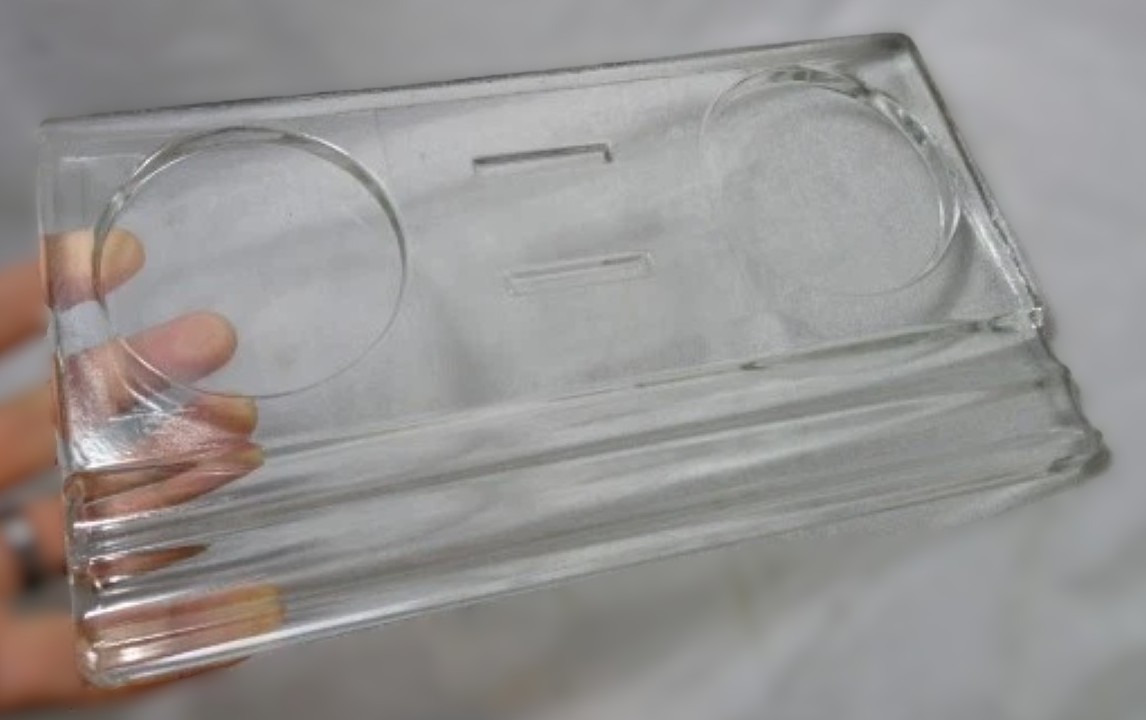
Sengbusch Double Inkstand
| Categories | Mechanical - Pump / Siphon |
| Type | Siphon |
| Material | Glass, Plastic/Celluloid |
| Markings | See Narrative |
| Manufacturer | Sengbusch |
| Origin | United States |
| Date or Era | circa 1920 |
| Measuring | 11” long x 6” wide |
| Patent | See link for: Sengbusch Self Closing Inkstand #51 – The Society of Inkwell Collectors (SOIC) |
This is a practical double inkstand featuring the innovative self-closing inkwells by Sengbusch, representing a functional evolution in office supplies from the early 20th century.
Description of the Inkstand:
- Material and Form: The inkstand is made entirely of thick, molded, clear glass, designed for durability and office use. The inkstand holds two inkwells. It features a central base that has a shallow channel for resting a pen in front.
- Sengbusch Self-Closing Inkwells: The most notable feature of this inkstand is its two Sengbusch Self-Closing Inkwells, specifically #51.
- Mechanism: These inkwells are ingeniously designed to keep the ink fresh and minimize evaporation and dust. They consist of an outer glass reservoir and an inner, inverted glass funnel or cone. When the inkwell is closed, the ink rises into the funnel due to atmospheric pressure, keeping only a small amount exposed at the very top for dipping a pen. When the inkwell is “opened” (often by pressing down), the ink level temporarily drops, allowing the pen to be dipped deeper. When released, the ink level rises again, re-sealing the ink from the air.
- Overall Aesthetic: This inkstand embodies a utilitarian elegance. While not overtly ornate, the clarity and substantial nature of the glass, combined with the clever engineering of the Sengbusch inkwells, make it a sophisticated and highly functional piece suitable for a professional office.
Historical Context of Sengbusch Inkwells:
- Inventor: George Sengbusch was a German immigrant to the United States who patented his self-closing inkwell design.
- Company: The Sengbusch Self-Closing Inkstand Company was founded in Milwaukee, Wisconsin, in the late 19th century (patents date from the 1890s onwards).
- Innovation: Sengbusch inkwells were a significant improvement over traditional open inkwells. Their design addressed the common problems of ink evaporation, contamination from dust, and accidental spills, making them highly popular in offices, schools, and homes where dip pens were still widely used.
- Popularity and Longevity: The company produced a wide variety of models and remained a leading manufacturer of inkwells and other office products (like “Ideal Sanitary Moistener” for envelopes and stamps) well into the mid-20th century, even as fountain pens gained popularity. Their products were known for their quality and innovative functionality.
This glass inkstand with two Sengbusch #51 inkwells is a quintessential example of early 20th-century office technology, highlighting a period when elegant design met practical innovation to improve the daily act of writing. It dates from approximately the early to mid-20th century, likely 1900s to 1940s, reflecting the peak of Sengbusch’s production and the continued relevance of their self-closing design.
For more information see the Inkipedia listing for Sengbusch #51 inkwell: Sengbusch Self Closing Inkstand #51 – The Society of Inkwell Collectors (SOIC)
Sold for $91 in June 2025
Content disclaimer. The information posted is the owner’s best knowledge and may not have been vetted by the SOIC. We welcome comments, corrections, and additions, working to make our website information comprehensive and accurate.
Join the Society of Inkwell Collectors (SOIC) – it’s free!
Founded in 1981 as a non-profit organization,
we are documenting inkwells (and accessories).
We’re here to help and inform!

